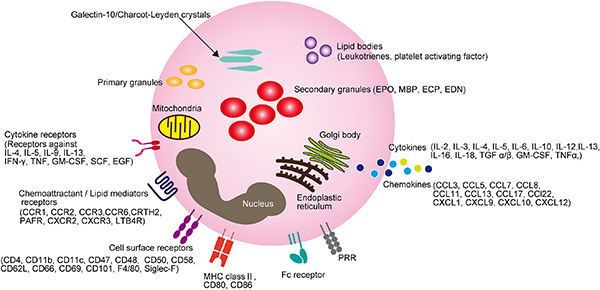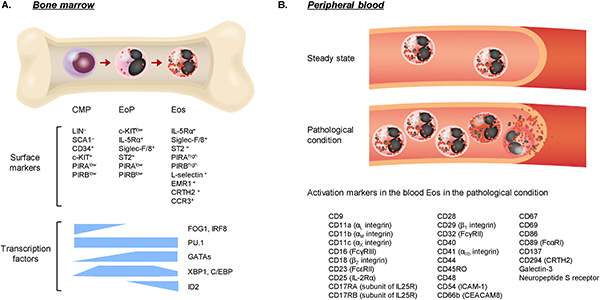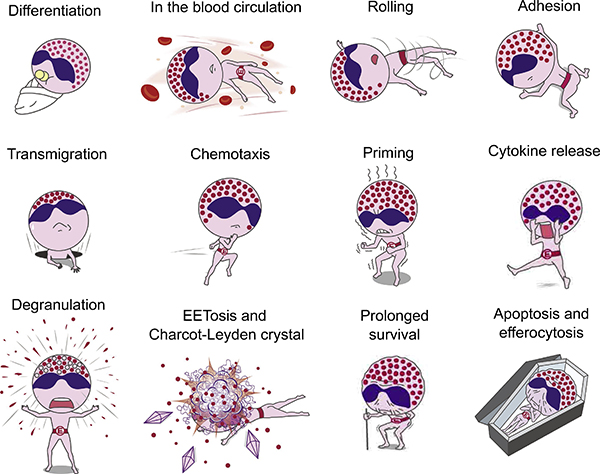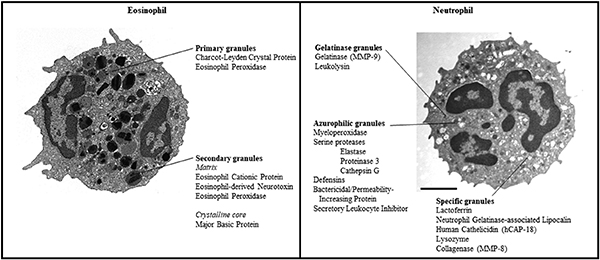Volume 70, Issue 1 (January 2021)
Review Series: Current Research Progress in Allergic Conjunctival Diseases
Fibrosis is the major hallmark of tissue remodeling, resulting from abnormal repair. Although eosinophils are involved in tissue repair and regeneration by secreting IL-4, chronic activation of eosinophil plays a role in tissue fibrosis. Aoki et al., based on their outstanding findings, review how eosinophils promote airway fibrosis. They clearly show that memory-type pathogenic Th2 cells expressing ST2, the receptor for IL-33, release amphiregulin in response to IL-33. Amphiregulin binds to epidermal growth factor receptor (EGFR) on eosinophils, leading to the secretion of osteopontin, an extracellular matrix protein associated with tissue fibrosis.
Traditionally, there are two types of eosinophils based on density, called normodense and hypodense, of which the latter show higher cytotoxic abilities. Kanda et al. review the modern classification of eosinophil subtypes, including resident and inducible eosinophils, in steady-state and pathological conditions. In addition, they suggest that morphology-based normodense and hypodense eosinophils are nearly the same as surface phenotype-based resident and inducible eosinophils, respectively. Of note, resident eosinophils express genes implicated in the negative regulation of immune responses, suggesting that this subtype is involved in the regulation and homeostasis of immune responses and subsequent tissue inflammation.
Eosinophil extracellular trap cell death (EETosis) is one of the hottest topics in the field of eosinophil research. EETosis is the active non-apoptotic cell death of eosinophils, which releases DNA fibers. Fukuchi et al. demonstrate how to detect EETosis and extracellular traps using shear stress and bacteria-sized microbeads, and we can see that extracellularly spread DNA traps the microbeads like a “spider web”. They also include a unique cartoon of their own creation, called “EOSMAN,” which illustrates the fate of eosinophils. Readers will feel their love for eosinophils.
Gigon et al. review the current understanding of the mechanisms of toxicity of eosinophil granule proteins together with neutrophil granule proteins. Using as an example of primary granule proteins, they discuss the Charcot-Lyden crystal (CLC) protein, also known as galectin-10. Although CLC was identified in 1853, earlier than the discovery of eosinophils, the precise characterization of CLC has not been fully understood. However, attention has been focused again on CLC protein/galectin-10 because CLC is formed during the process of EETosis. In addition, CLC protein/galectin-10 itself can promote type 2 inflammation.






